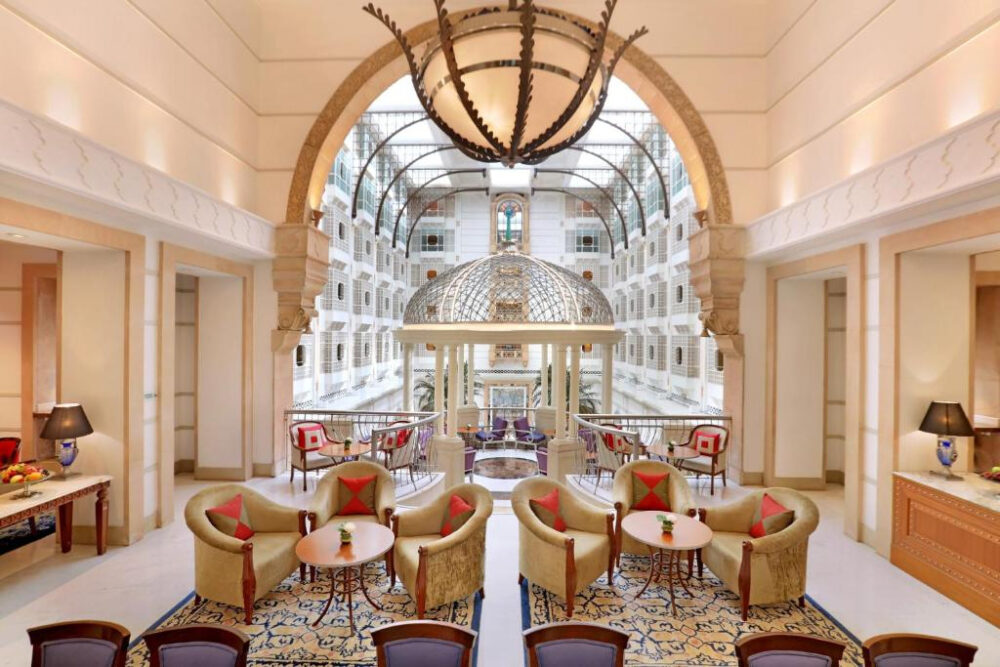Mumbai can feel like many cities within one giant metropolis – India’s most populous city has everything, including stylish beaches futuristic malls, glorious monuments and hipster hangouts.
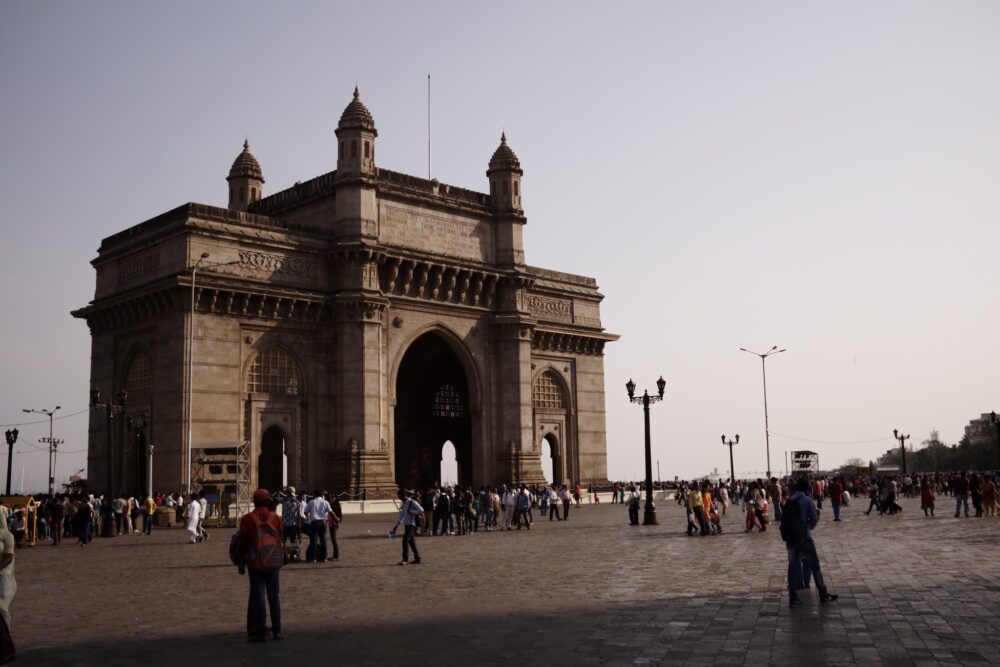
Gateway of India (Photo: Nicolas Vigier/ Flickr.com)
If you ever think you know Mumbai, then you probably haven’t seen it all. It is a vast sprawling metropolis where you will find every culture, class, dialect and tradition imaginable, with beaches, superclubs, ancient markets and colonial architecture living side-by-side, the streets overflowing with chaos, energy and life. Stand on a dusty corner of the Colaba Causeway for five minutes and you could catch a glimpse of everything from a Bentley, to a Hindustan Ambassador, to a cycle rickshaw to a handcart come trundling by – India’s most populous city can feel like the old and new worlds mashed together in one vibrant, 24hr melting pot of a city.
What makes Mumbai even more energetic – and confusing – is the speed at which certain parts of the city evolve, while other parts stand still. Almost half of the 21.6million population are thought to be living in illegal slums that form a patchwork throughout the urban sprawl while the Mumbai glitterati embrace the biggest trends on the planet – clubs like Toy Room by Pacha, slinky cocktail bars and hipster-baiting street food outlets are all the rage. Mumbai differs from much of India in its laid-back approach however – if it’s possible for a place to be both hectic and easy going at the same time, then that’s Mumbai.
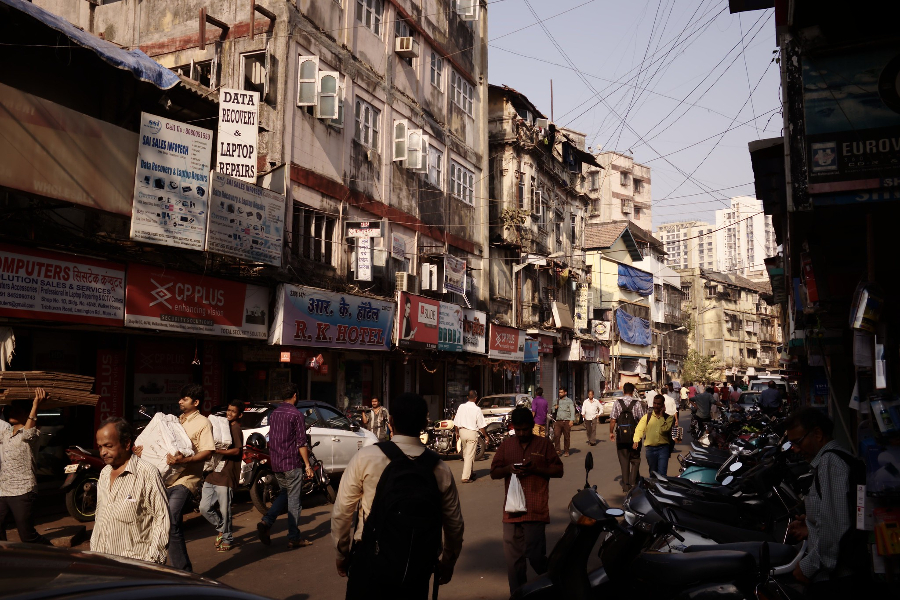
(Photo: Nicolas Vigier/ Flickr.com)
When it comes to accommodation in Mumbai, just like everything else, the options are almost limitless. AirBnb is a reliable way to feel at home in the city, with everything from modern beachfront apartments to swish bijou pads in the Business District. But, depending on your outlook, using the popular flat-renting app could mean that you somehow miss the point on Mumbai – that is, to feel almost constantly involved in the chaos. If that’s the case, then it could be that a colourful hostel in Bandra West, where you can swap traveller tales, or an opulent upmarket hotel in Colaba, complete with the feel of being part of the Maharaja, might be more your cup of tea.
Neighbourhoods
Whether you’re in Mumbai to check out the food, the beaches, the nightlife or just to walk around soaking up the atmosphere, this is a city that rewards those who do a bit of prior research. It really helps to find the best place to base yourself in Mumbai as not only is it huge, it can be a hot and slightly frustrating experience travelling from one side of the metropolitan area to another. Here are five neighbourhoods to consider if heading to Mumbai.
Bandra West for Hipster Mumbai

Taj Land’s End (Photo: Booking.com)
Bandra West is arguably Mumbai’s coolest neighbourhood, a Bollywood stars hang-out that is packed full of a curious blend of 17th Century architecture, gallery spaces and Mediterranean olive bars. By now you may have realised that if you are after that trite traveller Mumbai experience of bartering over a 10 cents cup of chai and trying beetle nut in front of bemused locals, this might not be the place. But that’s the thing about Mumbai – there is no normal and Bandra West has a good blend of upmarket and more down-to-earth.
Bandra West is southwest from the international airport and easy to get to and, despite its cool reputation, has a great selection of affordable accommodation. A good way to get your bearings in Bangra West is the Basilica of Our Lady of the Mount, a 16th Century Catholic church that is the most prominent landmark, and situated in the south of the neighbourhood. The west, near the sea, is where you will find the culture and entertainment, whereas the east is quieter and more residential – Airbnb choices can be chosen in both areas to suit. Linking Road runs diagonally through Bandra West and is where you will find a lot of the hotels, from quality, upmarket establishment to more affordable joints.

Hammock Hostels (Photo: Booking.com)
Taj Lands End is an upmarket five-star with a very special location overlooking the Arabian Sea and service worthy of a top hotel in the Middle East. It’s expensive but worth a night’s stay if you can stretch the budget. Also worth checking out for a more budget option is Hammock Hostels, a well thought-out traditional hostel that is clean, friendly and has nice communal areas (with, you guessed it: hammocks). For something a bit more mid-range and private there are some good aparthotel options – check out Sarkar Chambers, a three-star one-bed apartment that is tastefully decorated.
Colaba for the First-Time in Mumbai
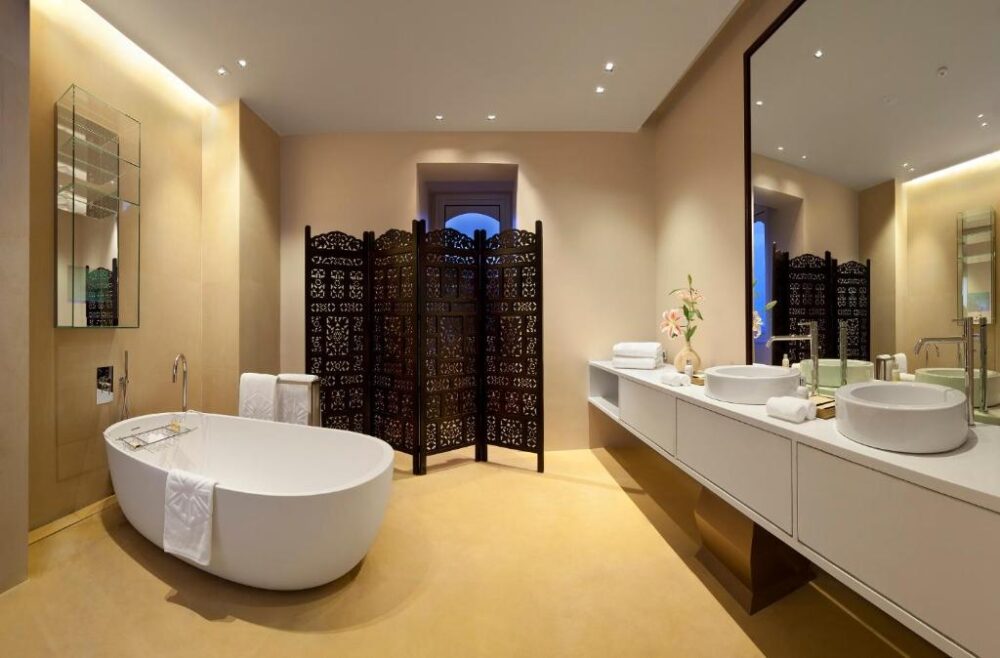
The Taj Mahal Palace (Photo: Booking.com)
Colaba may draw a few groans from the Mumbai aficionados but the city’s tourist capital has pretty much every element of the metropolis packed into one southern district. For a start it is the best place to stay to check out the Gateway of India, the grand city emblem that was built in 1924 in the Indo-Saracenic style. The neighbourhood is a heady blend of fast-paced Mumbai modern life and grand old crumbling Victorian relics that are half entwined by tropical plants. There are old time cafes selling good South Indian food such as Ramnath Snacks mixing it up with burrito stands and fusion foods.
Many of the AirBnbs in Colaba are high quality but can be a little bland, with white everything due to the heat. There are a few more vintage offerings, with antique furniture, but it makes sense to book well in advance. The Taj Mahal Palace in Colaba is perhaps the best known – partly and sadly because of the 2008 attacks in the city – in Mumbai, if not India, and this five-star doesn’t disappoint. For just over 200 Euros (depending on when you book) you get a world-class hotel with 11 restaurants and bars, plus a luxury spa and pool. Further south are plenty of more budget options, one of the best being Hotel Harbour View, with comfortable and inexpensive rooms.
Juhu for Beach Life
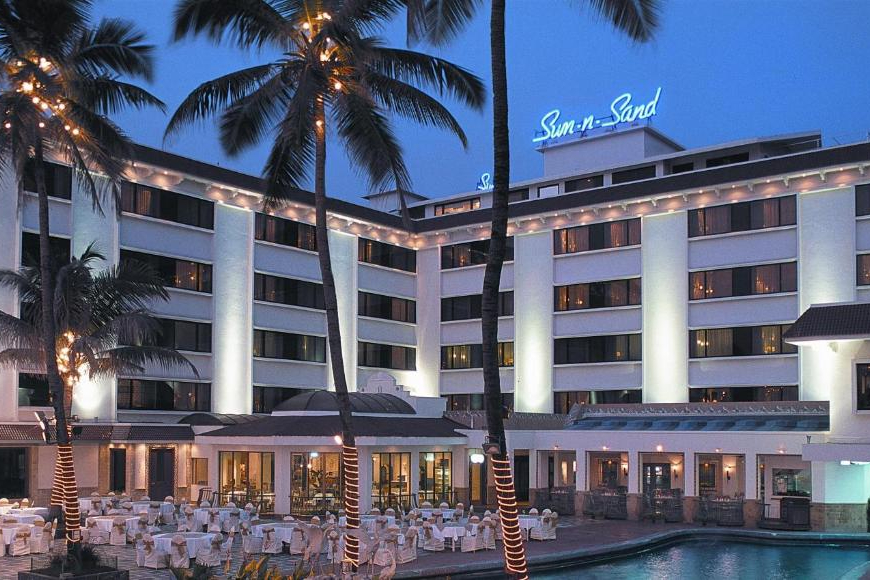
Sun-n-Sand (Photo: Booking.com)
For a completely different perspective of Mumbai, head to Juhu and its famous beach. Located just north of Bandra West, this is modern Mumbai at its best, with pockets of millionaire properties and rows of upmarket hotels, along with a lively nightlife that kicks off as soon as it gets dark. By day it’s a relaxed, easy place to kick back and escape the hustle and bustle of the city. There is yoga on the beach and quiet cafes to while away the hours – you wouldn’t think that big city Mumbai is just a few kilometres away. Juhu is a really great destination for some of Mumbai’s best food too, from heavenly dim sum at Dashanzi to buzzing street food stalls selling panipuri and pav-bhaji. For accommodation the Sun-n-Sand is a five-star hotel with a bit of Bollywood glamour to it. Right next to Soho House Mumbai is the five-star Hyatt Centric Juhu Mumbai, which has smart rooms and excellent service, with a price tag to match.
Andheri for Feeling Like a Local
Situated in Western Mumbai, but more north than most tourist districts, Andheri can feel like a lesser-known part of the city, for travellers at least. To this, the locals often reply: this is the real Mumbai. This is a place where you can see ancient Buddhist rock art in the form of the Mahakali Caves and in the same day visit a post-modern temple to consumerism like the glass-fronted and Bollywood emblazoned Infinity Mall. It feels exciting and urban at times, with easy access to national parks and also an accessibility – you probably will feel more like a local in Andheri than a lot of other spots in Mumbai.
There is also Versova Beach, looking out over the Arabian Sea and flanked with palm trees. There are some good accommodation options in this neighbourhood but you need to know where to look. The respectable, but at times gaudier, hotels are in Andheri West, nearer the beach. A good shout is Hotel Good Luck Residency, with a low price, good levels of hygiene and, well that’s probably all you can hope from with a two-star. On the eastern side of the Western Express Highway is a clutch of good hotel options. Here you will find the uber luxury ITC Maratha, a slick five-star with pool and gym, and and also the top-end JW Marriott. For something a bit more mid-range check out the Hotel the Pacific Chakala, a neat and clean place with excellent facilities.
Fort for the Arts

Grand Hotel Mumbai (Photo: Booking.com)
Just north of the Gateway of Mumbai is Fort, very much the city’s historic district, with architecture that dates back to the British era in India. One place in particular makes staying in Fort worthwhile: Kala Ghoda, a neighbourhood that has made its name as the best place in Mumbai to experience the arts of Mumbai and India as a whole. The reason for this, in part at least, is the annual Kala Ghoda Arts festival, which has been running since 1999 and is made up of everything from heritage walks to stand-up comedy. The area is just as diverse, with galleries, big and small, cultural spaces, fashion boutiques and educational institutions. It is also a good destination for more traditional handicrafts too.
Considering how close it is to many of the must-see monuments in the city, staying near Kala Ghoda can be a bit tricky. Because it is in such a well-known tourist area, there are a lot of sub-par hotels that are poor value for money – so watch out. There are a couple of decent hotel options in Fort, with easy access to Kala Ghoda. The first is Hostel Vasantashram CST, a passable hotel with very cheap dorms and single room options and pleasingly old school decor. The Capital Hotel, which is just 850 feet from Chhatrapati Shivaji Terminus, is a friendly, pleasing hotel with walkways that look out over the buzzing streets below. The Grand Hotel Mumbai in Fort is more upmarket but doesn’t get great reviews – for something upmarket you’ll be better off heading to the other side of the peninsula to check out the InterContinental Marine Drive in Churchgate, which is just a twenty minute walk to Kala Ghoda.
